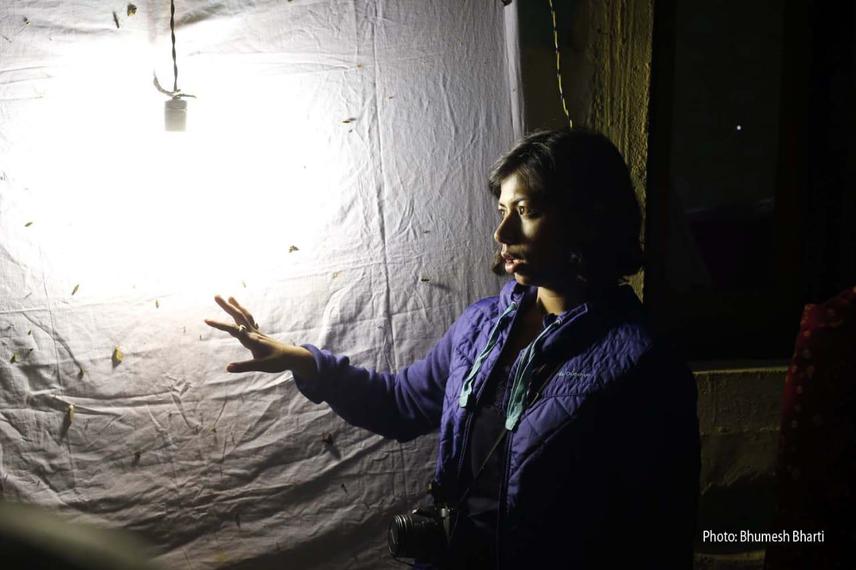Article featuring the project on mint
Pritha Dey
How do we conserve species without knowing which species are endangered or even how many species there are? Despite their fundamental roles in nature and in the definition of conservation priority areas, lack of studies has prevented moths to be established as bioindicators in conservation studies. In a fragmented and threatened landscape of western Himalaya, there is a lack of comprehensive record on moth fauna. Our work aims to evaluate the effectiveness of a faunal inventory in a hyper-diverse group, in long-term research, assessing conservation status, establishing potential bio-indicators as well as its ability to flag exotic and cryptic species. The idea is to understand the diversity and how the moths of such an important landscape are distributed under changing conditions and also capacity building through outreach programme.

Moth-watching session as a part of the Devalsari Titli Utsav.
The Himalaya, a global biodiversity hotspot, is home to distinctive faunal diversity. Unfortunately, it is one of the main bio-geographic areas undergoing rapid alteration due to past and proposed development plans as well as land-use changes and impacts of climate change. The baseline data for an important bio-indicator group like moths (Lepidoptera: Heterocera), where there are 10000+ species reported patchily throughout the country, is missing from this region to pile on further extensive research.
The proposed project will add to the very sporadic documentation of the status and distribution of moths from the western Himalayan region. The generated systematic baseline data will enable future long-term monitoring.
Apart from field surveys, the proposed work also aims for outreach and awareness programmes through presentations about the importance of conserving moths, public moth trapping sessions with the involvement of local people and forest department staff. In collaboration with NGOs, easy-to-use pocket field guides (in Hindi and English) would be published and distributed to school students and young enthusiasts. We eventually intend to equip locals with knowledge of basic moth identification in order to conduct citizen science projects or long-term monitoring in the future. This study will generate a robust trend of diversity and distribution of moths across elevational and vegetation regimes. It will also involve the local volunteers to make them aware about the common species of moths and how they are important to the ecosystem and how unmanaged extraction and grazing in the forest might deplete the habitat of some rare species of moths restricted to higher altitude areas. Capacity-building efforts engaging with local NGOs and forest staff will ensure further outreach and awareness initiatives